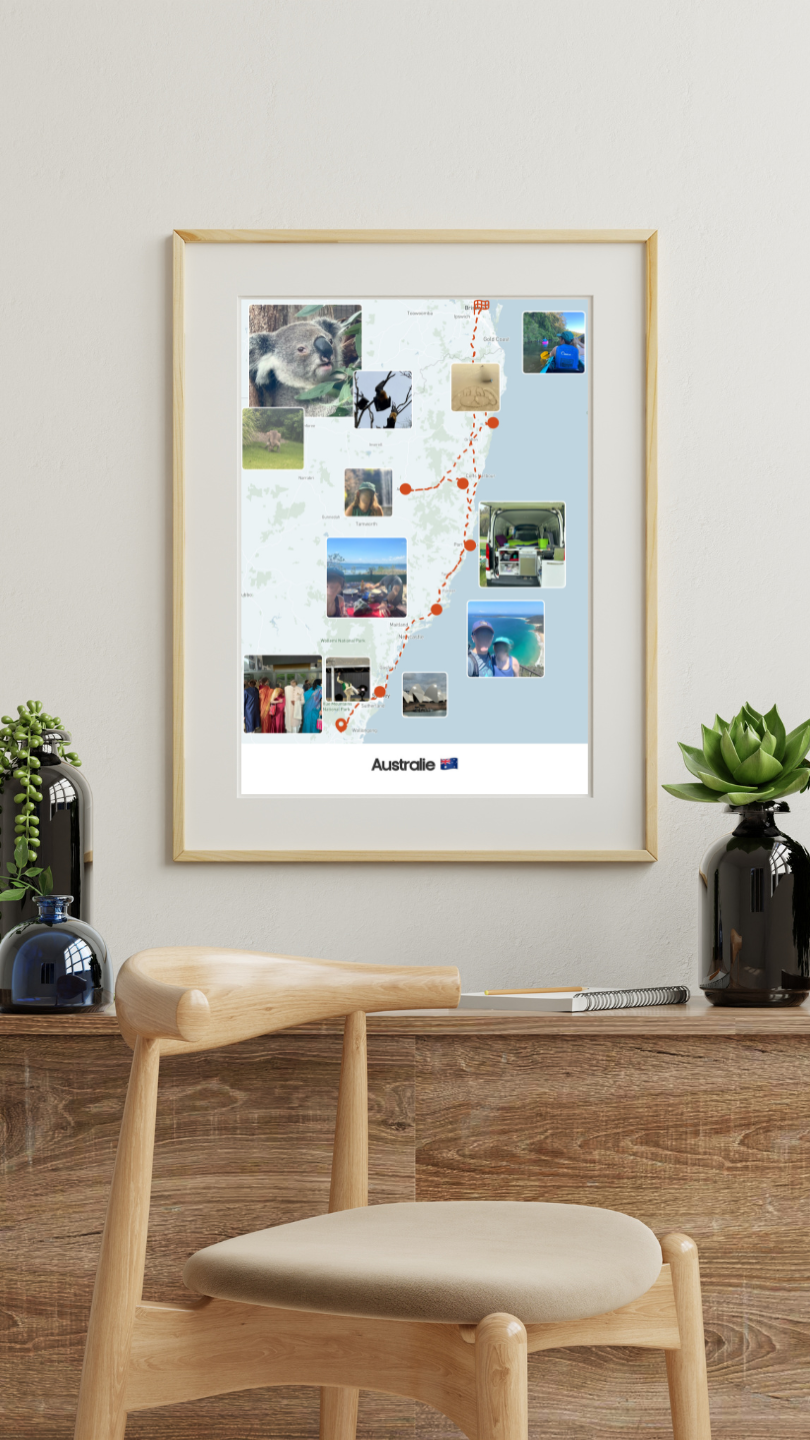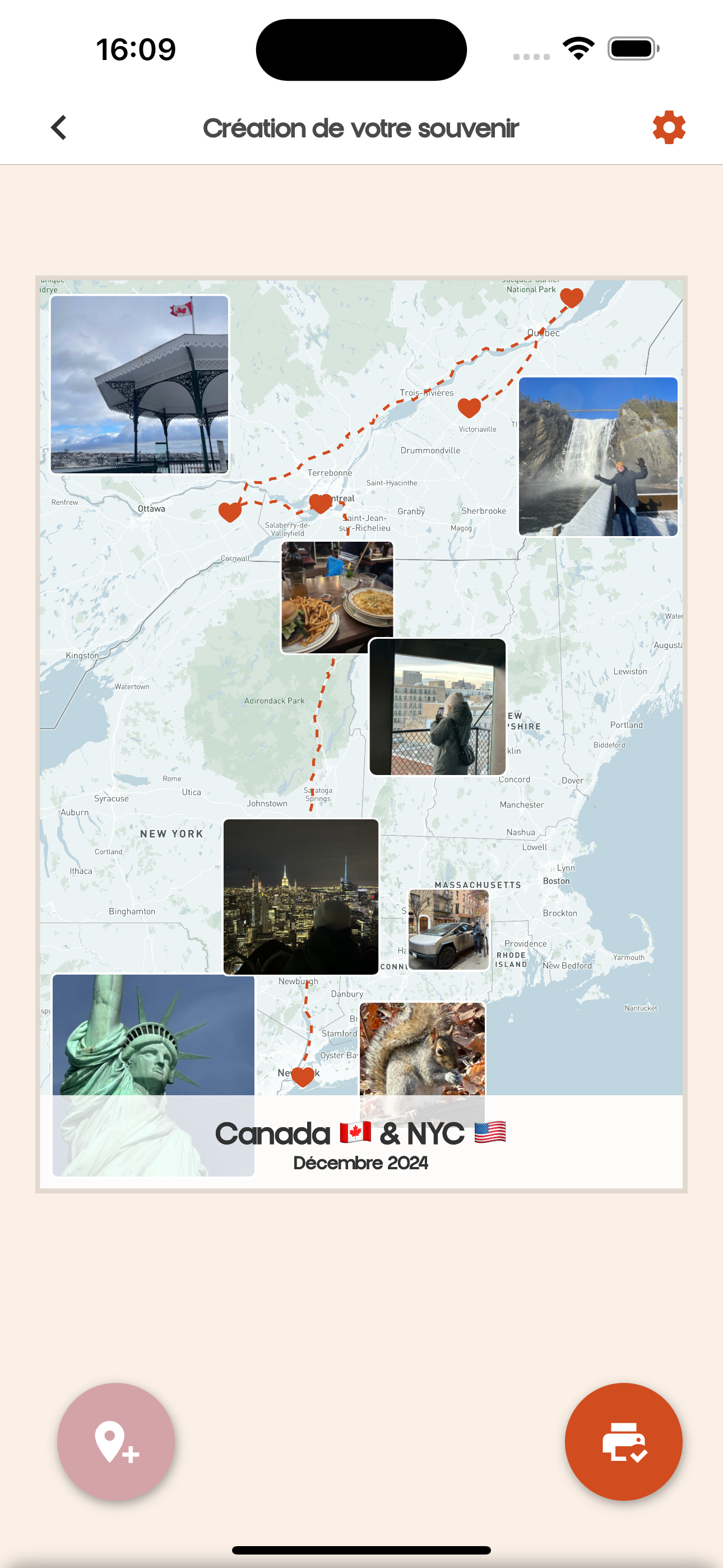Traveling is a source of excitement and adventure, but planning can often prove chaotic. Fortunately, there are apps that help simplify the planning process. In this article, we will explore the best apps to organize your travels so you can enjoy your getaway without hassle. 🌍✈️

Introduction - Must-Have Apps for Organizing Your Travels
1. TripIt - The All-in-One Tool for Your Itinerary
TripIt is an outstanding app that consolidates all your reservations in one place. Whether it’s flights, hotels, or activities, TripIt takes care of it all. You simply need to forward your booking confirmations via email, and the app does the rest. This feature allows you to access your itinerary even without an Internet connection. The interface is clear and easy to navigate, making it simple to find your important information at a glance.
2. Google Maps - Your Ally for Navigation in a New City
When it comes to getting around in a new city, Google Maps is essential. This free app provides detailed directions for walking, driving, or public transportation. One of its most valuable features is the ability to download maps for offline use, which is particularly useful when traveling abroad without Internet access. Additionally, Google Maps also offers options for searching for restaurants, tourist attractions, and other points of interest.
3. Skyscanner - For the Best Flight Prices
Skyscanner is a highly regarded app for finding the best flight prices. By scanning hundreds of airlines and travel agencies, Skyscanner helps you uncover the best deals. Moreover, the interface allows you to compare prices across different days to find the cheapest travel dates. Don’t forget to check for price alerts that notify you of fare drops on your chosen routes.
4. Airbnb - Unique Accommodations at Your Fingertips
For those seeking unique lodging experiences, Airbnb is the perfect solution. Whether you prefer to stay in a budget apartment downtown or a luxurious villa, Airbnb offers a variety of options for every type of traveler. You can also read reviews from other travelers to ensure you're making the right choice. Plus, their customer support is available to provide confidence while booking.
5. Google Translate - Overcoming Language Barriers
Traveling to a foreign country can also be complicated because of language. Google Translate is an indispensable app that facilitates communication during your travels. It offers text translations, voice translations, and even real-time translations using your camera to translate signs or menus. This allows for better interaction with locals and makes your travel experience much more enjoyable.
6. Couchsurfing - Meet Locals and Save on Accommodation
Couchsurfing is a platform that allows you to stay with local hosts for free. This is a great way to meet people, exchange experiences, and discover local culture in an authentic manner. As a traveler, it also enables you to save on accommodation costs, allowing you to spend more on activities during your trip.
7. Google Trips - Your Personalized Travel Assistant
Although Google has discontinued the Google Trips app, some of its features have been integrated into Google Maps. That said, this tool remains valuable for planning, storing reservations, and retrieving your itineraries. By linking your booking emails, everything is centralized, allowing you to visualize your trip optimally while keeping all necessary material handy.
8. PackPoint - Never Forget Items in Your Suitcase
PackPoint is the ideal application for those who often tend to forget essential items when packing. By providing your travel details, the app automatically generates a packing list that considers your destination and length of stay. You can also customize the list by adding your own items to ensure there are no unpleasant surprises when it’s time to pack.
9. Rome2rio - Explore All Your Transportation Options
Rome2rio is another highly useful app for travelers. It helps you visualize different transportation options between two destinations, whether it be by bus, train, car, or even ferry. This type of information allows users to choose the most suitable and often the most economical means of transportation. With Rome2rio, it’s possible to instantly view all the details regarding schedules, prices, and distances.
10. Hopper - Predicting the Best Time to Buy Flight Tickets
Hopper uses algorithms to analyze airfare trends and succinctly represent the best periods to buy your tickets. This app will send you notifications to highlight potential fare drops regarding your trip. It has thus become an essential tool for those wanting to maximize their travel budget.
Conclusion - Apps for a Carefree Travel Experience
With the rise of technology, it has never been easier to plan your trips. The apps we reviewed not only help you organize your vacations stress-free but also make traveling more fun and rewarding. Don’t hesitate to try these tools for better organization of your travels so that you can fully enjoy your getaway! 🌟📱
FAQ - The Best Apps to Organize Your Travels
1. What are the best apps to organize an international trip?
The best apps to organize an international trip include TripIt for itinerary management, Google Maps for navigation, and Skyscanner for flight deals. Using Airbnb allows for unique lodging options, while Google Translate aids in communication with locals. Couchsurfing is also a great choice for meeting people and saving on accommodation. PackPoint, Rome2rio, and Hopper are additional useful tools to streamline your travel organization.
2. How often should I check flight prices?
It is advisable to check flight prices regularly, at least once a week, to stay on top of trends. Use apps like Hopper that predict price drops and alert you when the right time to purchase arises. Additionally, don’t underestimate the importance of monitoring promotions from airlines and travel agencies. Generally, it is best to buy tickets between one to three months prior to your journey to secure the best deals.
3. What are the most reliable apps for booking accommodations?
Airbnb is widely recognized for its reliability in providing unique accommodations available in many cities worldwide. Booking.com is another popular platform offering a wide selection of hotels, apartments, and hostels. Agoda and Expedia are also good options as they are known for their user reviews and competitive rates. Always ensure to read comments and check cancellation policies before booking.
4. How can I avoid hidden fees when booking a flight?
To avoid hidden fees when booking a flight, make sure to read the terms of your ticket carefully before finalizing your purchase. Low-cost airlines, in particular, can apply additional charges for services like baggage check-in or seat selection. Comparing prices using apps like Skyscanner allows you to get an overview of your trip’s costs. Be sure that the displayed price is final and includes all options, including insurance.
5. How to use Google Maps offline?
To use Google Maps offline, you first need to download the map of the area you’ll be visiting. Open the app, search for the area you want to download, and once the map is displayed, click on the three dots in the upper right corner and select “Download offline map.” This will allow you to access the map without an Internet connection. However, note that certain features like real-time information will be unavailable.
6. What is Couchsurfing and why is it beneficial?
Couchsurfing is a service that connects travelers with local hosts for free stays. This not only helps save on accommodation but also allows for authentic experiences by engaging with locals. It can also open opportunities for local activities and cultural exchanges. However, it’s crucial to read reviews and have serious conversations with the host before booking to ensure your safety and better understanding of what to expect.
7. What criteria should I use to choose a travel app?
When selecting a good travel app, consider your specific needs. Look for features such as user-friendly interface, online syncing capability, and user reviews. Also, check if the app functions offline, which can be crucial in certain travel situations. Regular updates and good customer service are signs of reliability. Lastly, it may be useful to choose multiple apps to address different needs (booking, navigation, translation, etc.).
8. Do digital travel guides replace traditional books?
Digital travel guides offer many advantages over traditional books, including real-time updates and interactive interfaces. However, many travelers still prefer books for their ease of use and the fact that they don’t require Internet access. This largely depends on personal preferences and the type of travel you’re undertaking. For trips where technology is limited, like mountain hikes, books may still reign supreme.
9. Why is it important to have a packing list?
A packing list is essential to avoid forgetting important items for a trip. It helps organize, reduces preparation stress, and ensures you have everything needed. PackPoint, for instance, can automatically generate a personalized list based on your destination and duration of stay. By having a visual list, you can easily check off items and make sure nothing is left behind, especially when managing various types of clothing or gear.
10. Are there apps for group travel?
Yes, there are several apps specifically designed to facilitate organizing group travel. Apps like GroupMe allow you to stay in touch with all group members without texting overload. Others like Splitwise help manage shared expenses, doing the math whenever someone pays. For planning itineraries, you can also use Trello to coordinate activities and tasks, providing a central place for ideas and agendas. All of this makes collaboration during group travels much smoother.






